Microsoft Office 365 is one of the most comprehensive Microsoft Office cloud services till date. This application is inundated with upgraded communication services to boost collaboration and automation such as Exchange, SharePoint Online, Microsoft Teams, Flow, PowerApps and more. With cost savings on capital expenditure (CAPEX), organizations find it easier to move their email services to cloud, along with other functionalities, to automate and streamline their business. Following are some benefits for migrating from Exchange 2013 to Office 365:
- No need of server-maintenance and server, and software upgrade
- No time lag for roll-out of features
- Services available on the move and on any device with no intervention
- Efficiency of IT services
- Security in hand
- Cost reduction due to reduced energy consumption and hardware update
However, Microsoft Office 365 cloud services are dependent on two major factors – number of users using the application and bandwidth capability.
Microsoft has several flavours of its offering as it comes with Mail, OneDrive, Office application software assurance and now with Windows as well as their Microsoft 365 plans. Microsoft has also introduced the Enterprise plan with PABX capabilities to fully move all your services to the cloud.
Bandwidth capacity should be on the higher side for users to access the cloud application efficiently. This is because their mailboxes, services, and data is on the cloud, not like the traditional way where all the data functionality is done in-house. On the other hand, you will not need expensive and high maintenance servers and disaster recovery plans. Also, you do not need to cater to for VPN and security over it. Also, you don’t need to go for hardware expansion, licenses, upgrades, etc. Instead, you can have your IT team to focus on automation and security.
Similar to the EDB to PST conversion, the migration from Exchange to Office 365 will differ based on the criteria such as size of the organization, number of users and the size of their respective mailboxes, knowledge about messaging environment i.e. Office 365 and Exchange, and the possible outcomes revolving around migration environment.
You can choose the migration process from the given four migration approaches, based on the above-mentioned factors.
1. Exchange Cutover Migration
This migration process involves moving all mailboxes at one-go. Since all mailboxes move at one time, it is difficult to execute the process with huge number of mailboxes. Hence, the number of mailboxes should not exceed the figure of 2000 and organization should be using either Exchange 2003, 2007, 2010, or 2013. This would involve setting up of the Office 365 beforehand with all the mailboxes and groups, set up a cutover date, and change the MX records. People will start using the new system and then migrate the data afterwards.
2. Staged Exchange Migration
In this method, mailboxes move in batches. When the number of mailboxes is more than 2000, deploy Staged Exchange migration. This method works with Exchange 2003 or 2007 only. For Exchange 2010 upwards, it is suggested to go with either Cutover or Hybrid migration. Although this migration is ideal for setups with more than 2000 mailboxes, each CSV file which represents a batch job, must not exceed 2000 mailboxes, otherwise, you need to split it into two or more batch jobs.
3. Hybrid Exchange Deployment-based Migration
There are two types of Hybrid deployment migration: Minimal Hybrid, which is ideal to move mailboxes only, and Full Hybrid, which is a full sync between local and online with all the features and benefits. Hybrid setup is only supported by Exchange 2010, 2013, 2016 and 2019. It is ideal when you have a large enterprise with huge amount of data to move. The Hybrid migration is the slowest process of migration but the smoothest one. However, for the administrators, it is a complex and delicate setup to configure.
4. IMAP-based Email Migration
This is a slow and long process. With Internet Message Access Protocol (IMAP), you must first create mailboxes for each user on Office 365 and then migrate their emails by using the IMAP migration. You can only migrate emails and not other items such as contacts, calendar items or tasks. The biggest email cannot exceed 35 MB. Also, there is a limit of 500,000 items from a user’s mailbox. This limit of the items will migrate the newest first, of course.
An Alternate and Easier Solution
Though all four native options provide the desired results, it is always better to resort to Stellar Converter for EDB for Exchange to Office 365 migration in most cases. Let us see how this argument is backed up.
How to Migrate Exchange 2013 to Office 365 by using Stellar Converter for EDB?
Stellar Converter for EDB does not change the data in your EDB, hence the structure and format of the mailboxes remain intact. This tool enables accessing mailboxes’ data without connecting to the server. To execute the process, download, install and run the software on your system. Now, follow the given steps:

- Select Offline EDB option under select conversion mode option.
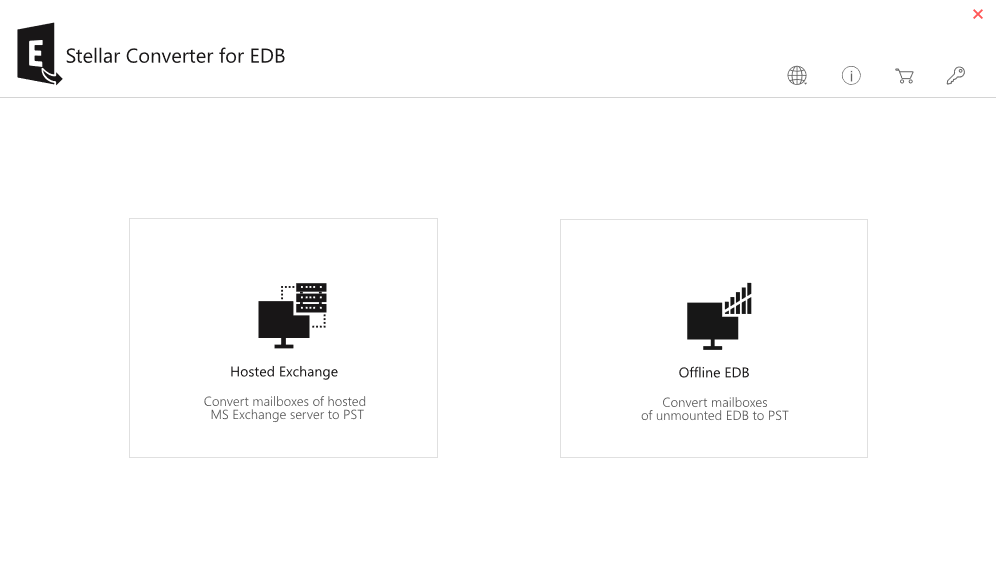
- In the next screen, you will see an option of Browse. Click on that button to select your Offline EDB file. You can also find the EDB file with Find Then you need to know the file location
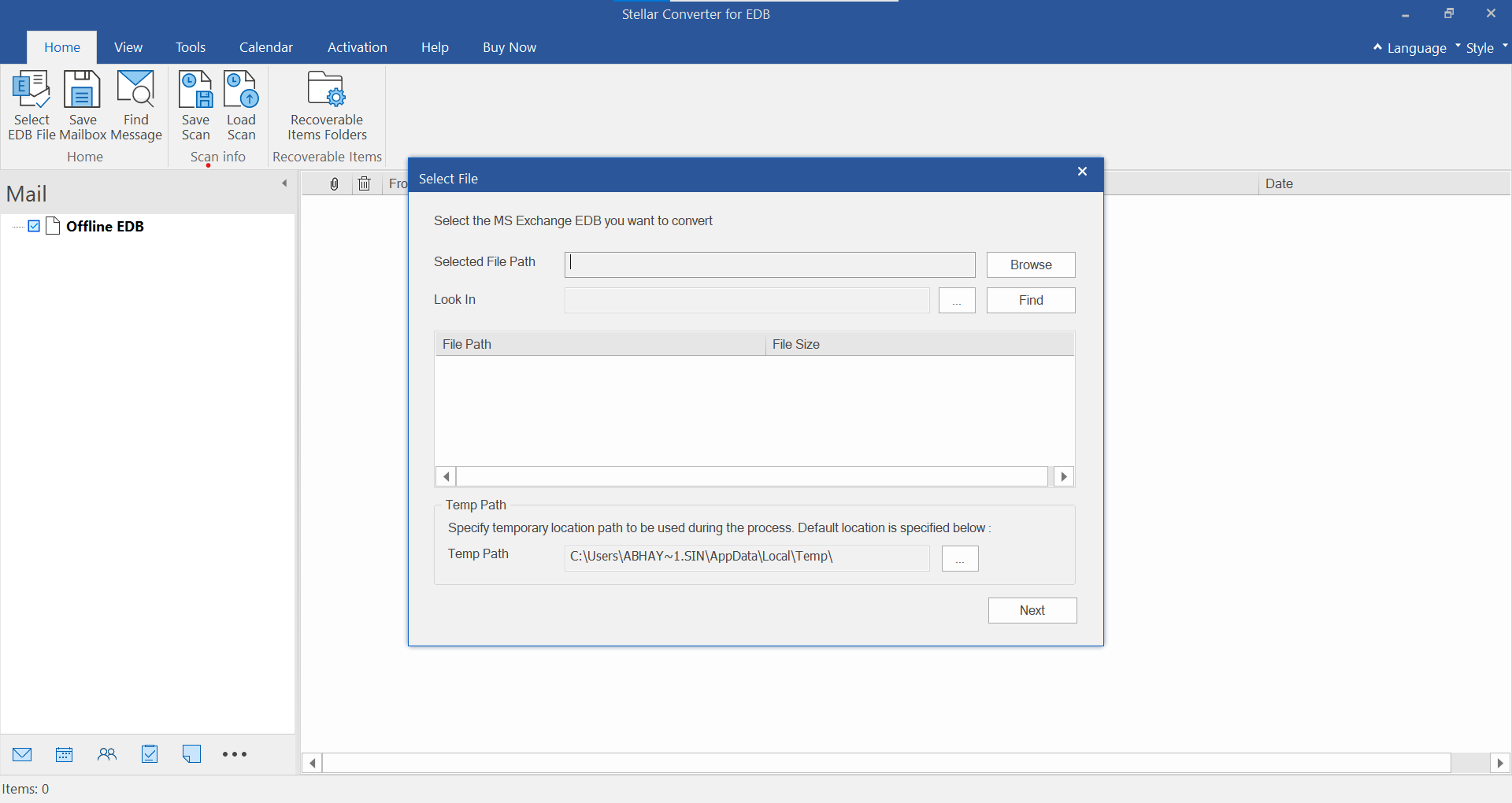
- After selecting the EDB file, click on Next button to start the process.
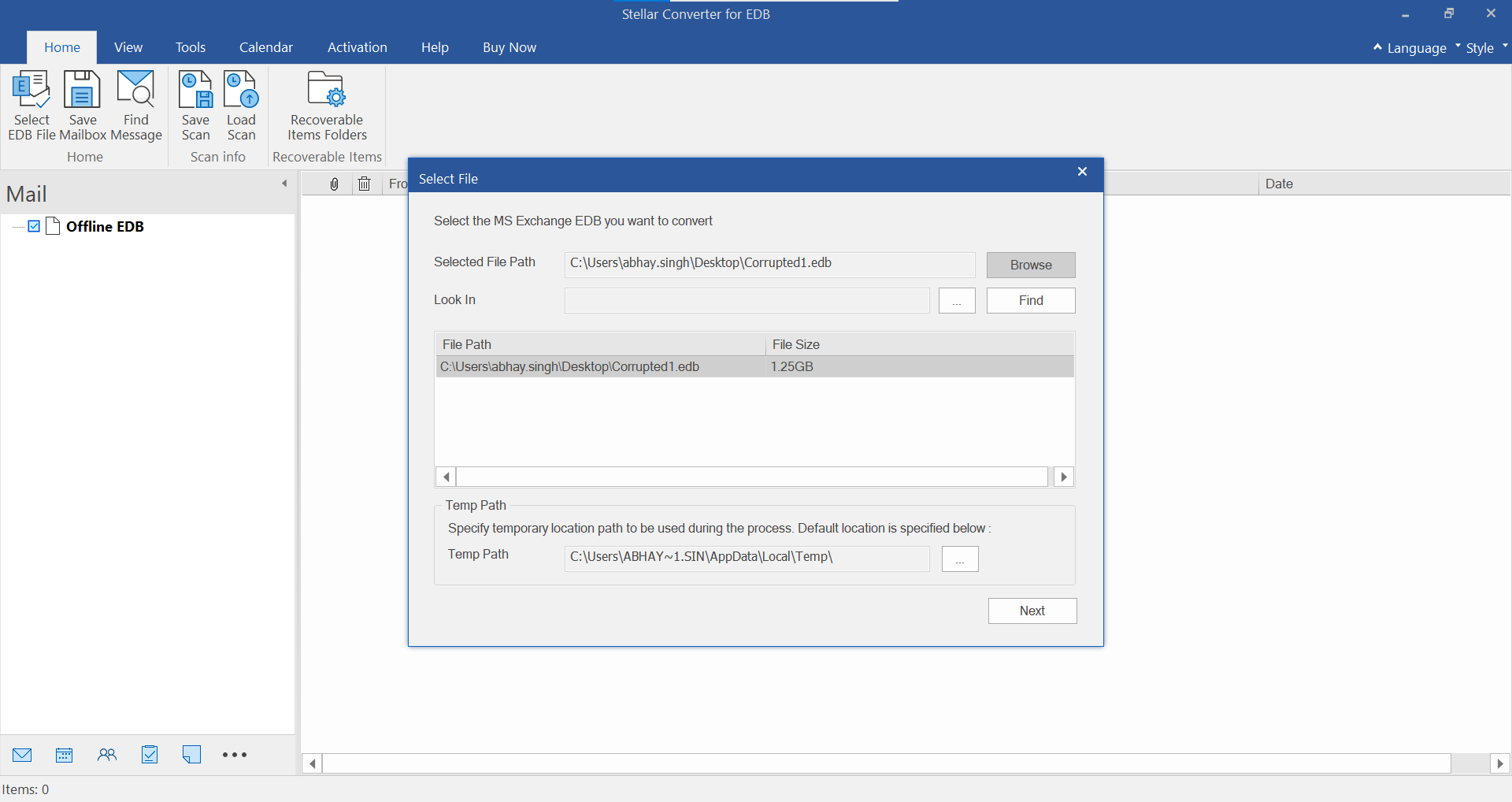
- You will get the display of all the contents of mailbox folder including emails, contacts, calendars, journals and more.
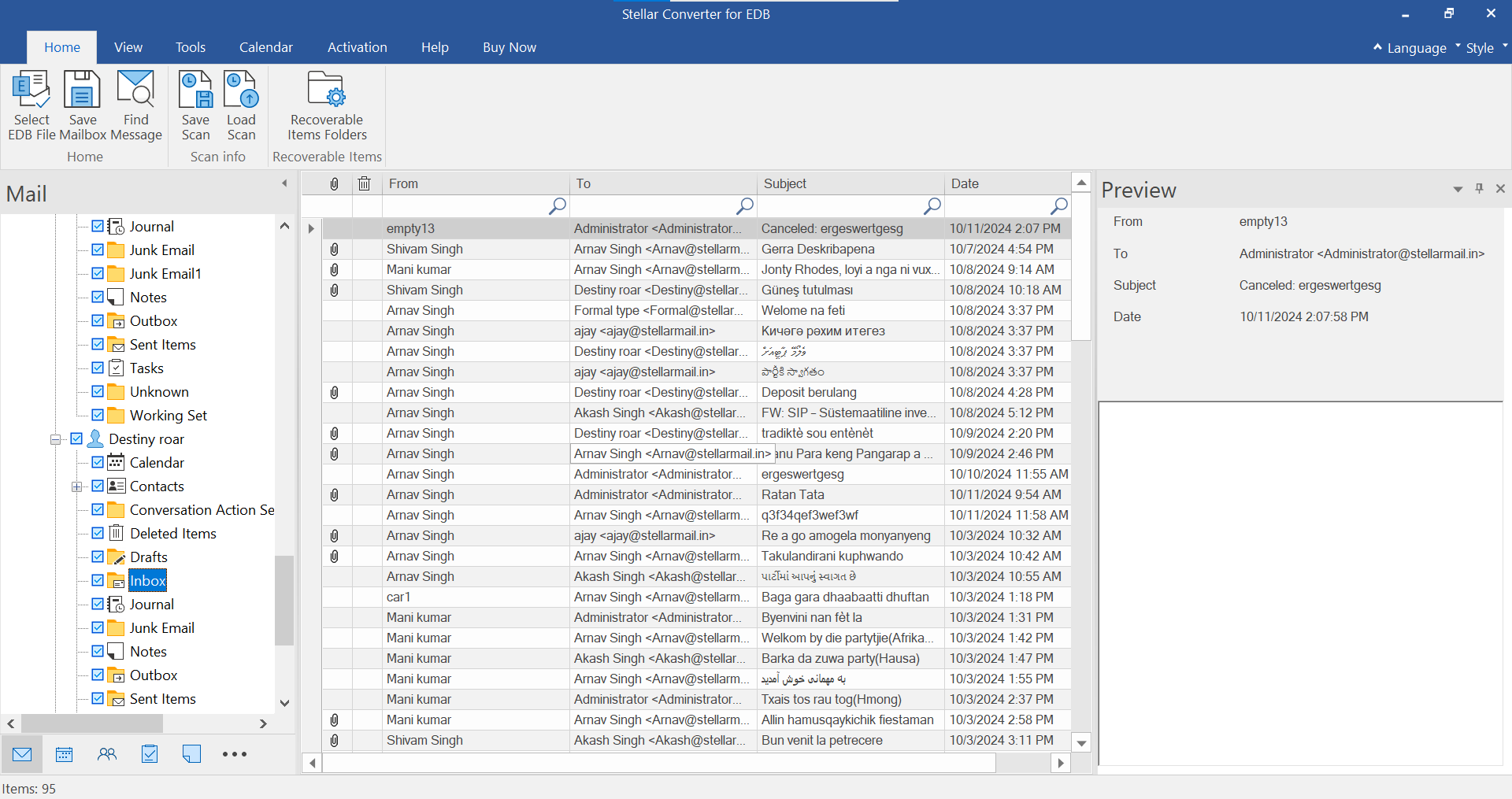
- Click on any item. The folder contents will be displayed in the centre.
- Office 365 Details dialog box pops-up with a message: ‘All selected folder of offline EDB will be merged with Office 365 profile’.
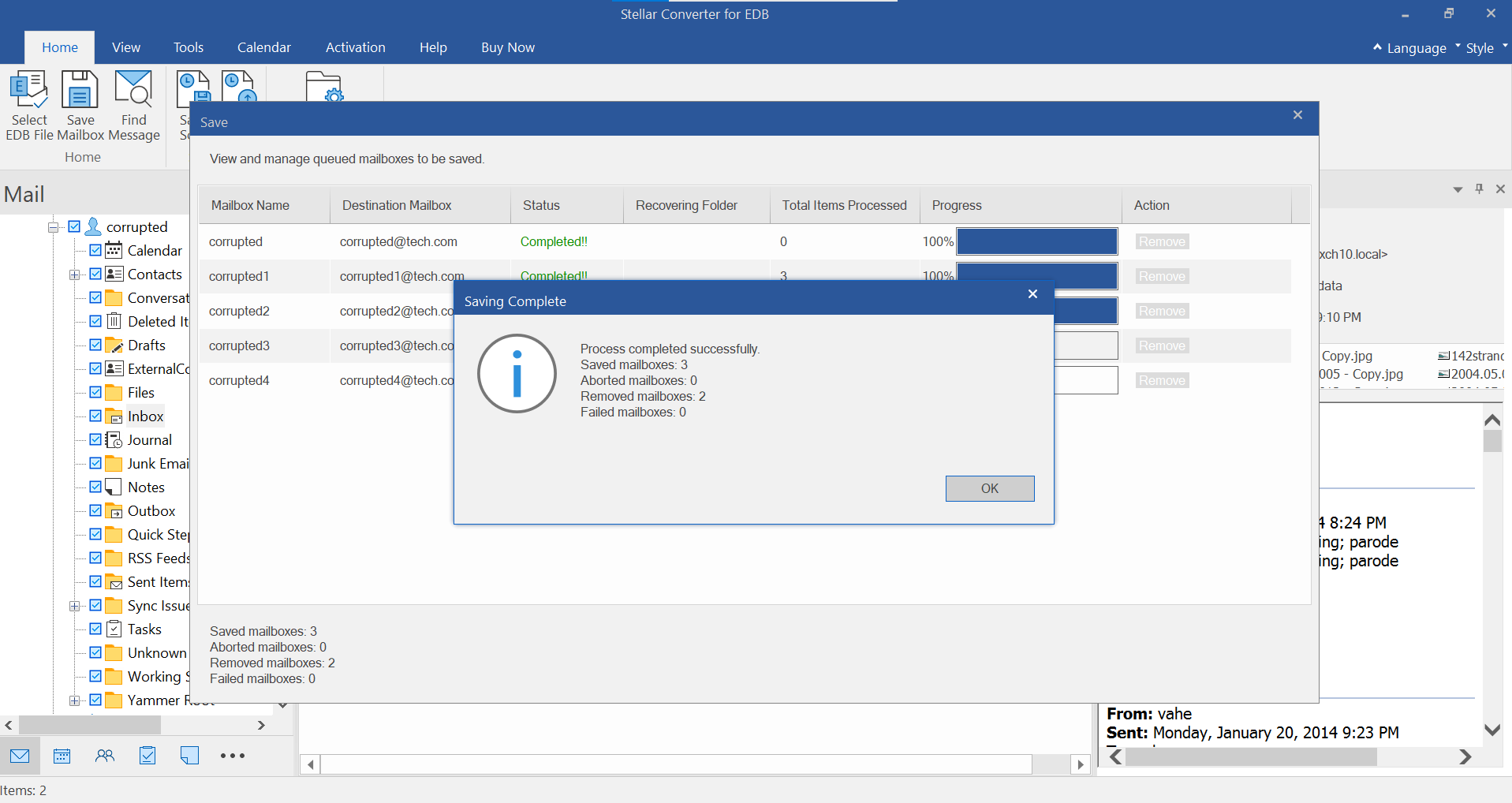
- Provide User credentials (User ID and valid password) and click on OK.
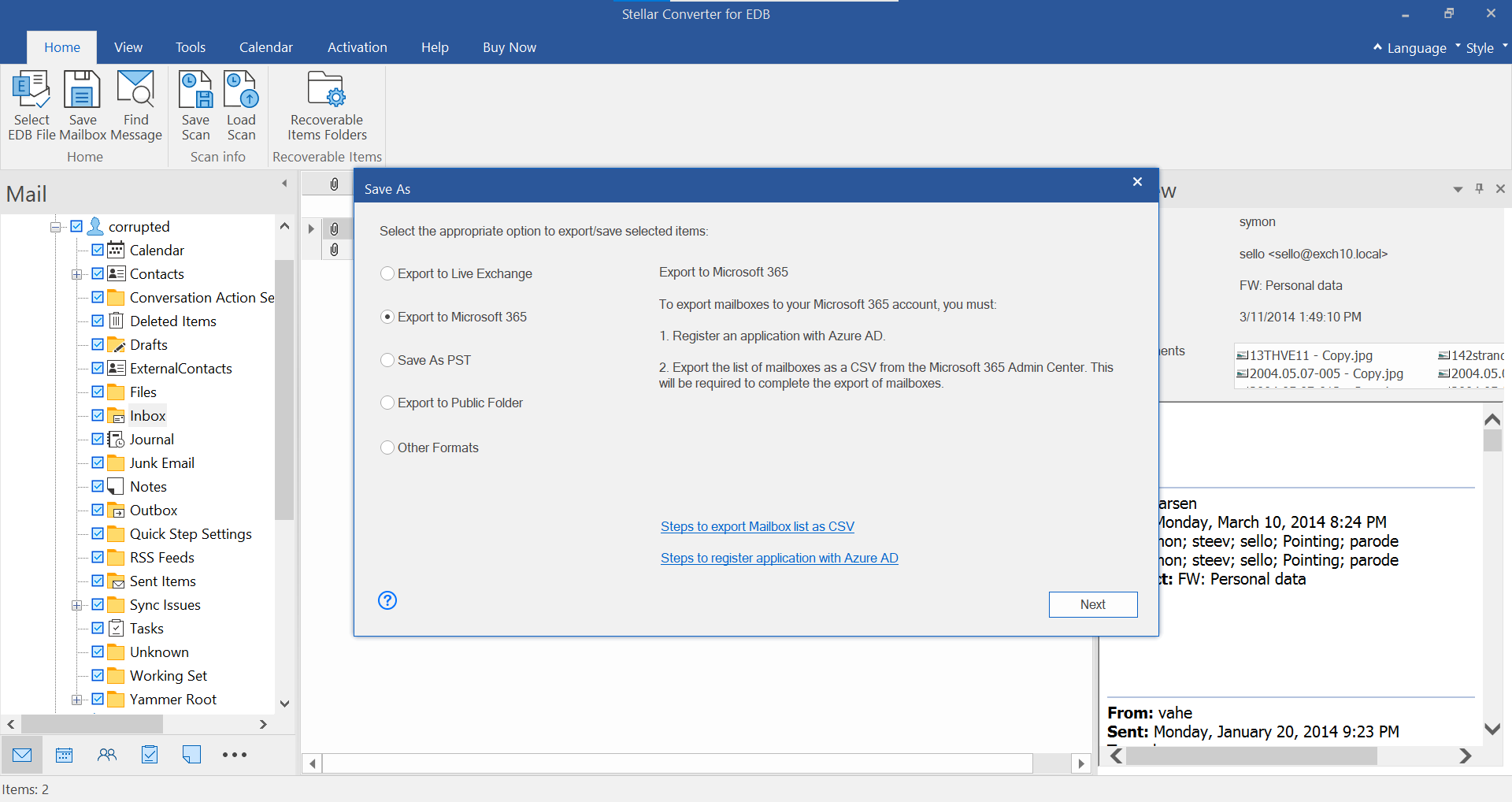
Your Exchange mailboxes are migrated to Office 365. Open the Cloud application and start communicating.
Though the manual processes seem simple, these are tedious, especially when you are new to either Exchange or Office 365 application. Moreover, there is always a risk of data loss in transit. In order to avoid crucial data loss and continue working efficiently on migrated tools, it is always good to use EDB to PST Converter. This software is designed and developed to preview complete mailbox data and perform migration after complete verification.
The Final Words
Office 365 can be a efficient service for the users and the admins alike. Though the migration from Exchange server to Office 365 can be a bit painful and sometimes stressful depending on the setup and the users’ configurations. So, your focus would be on the setup and configuration while the migration of data can be easily done with no complex setups by using Stellar Converter for EDB.
Was this article helpful?